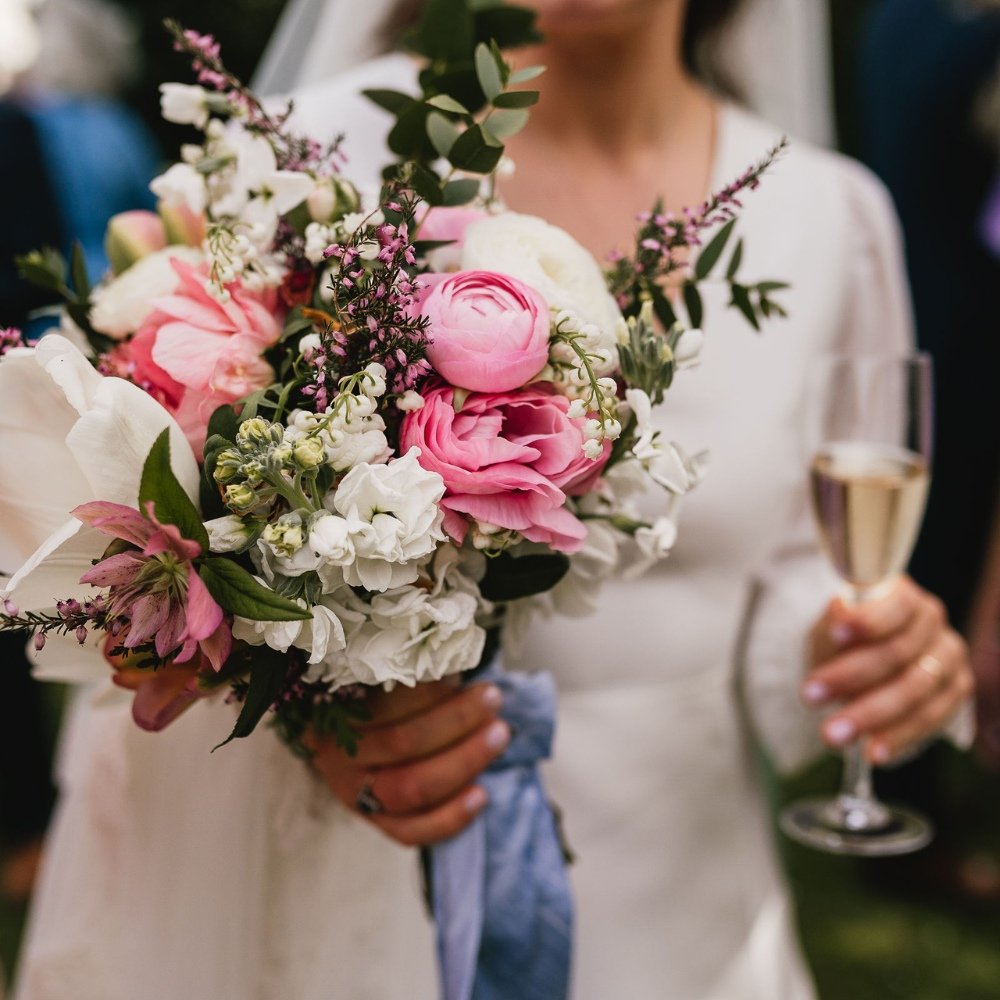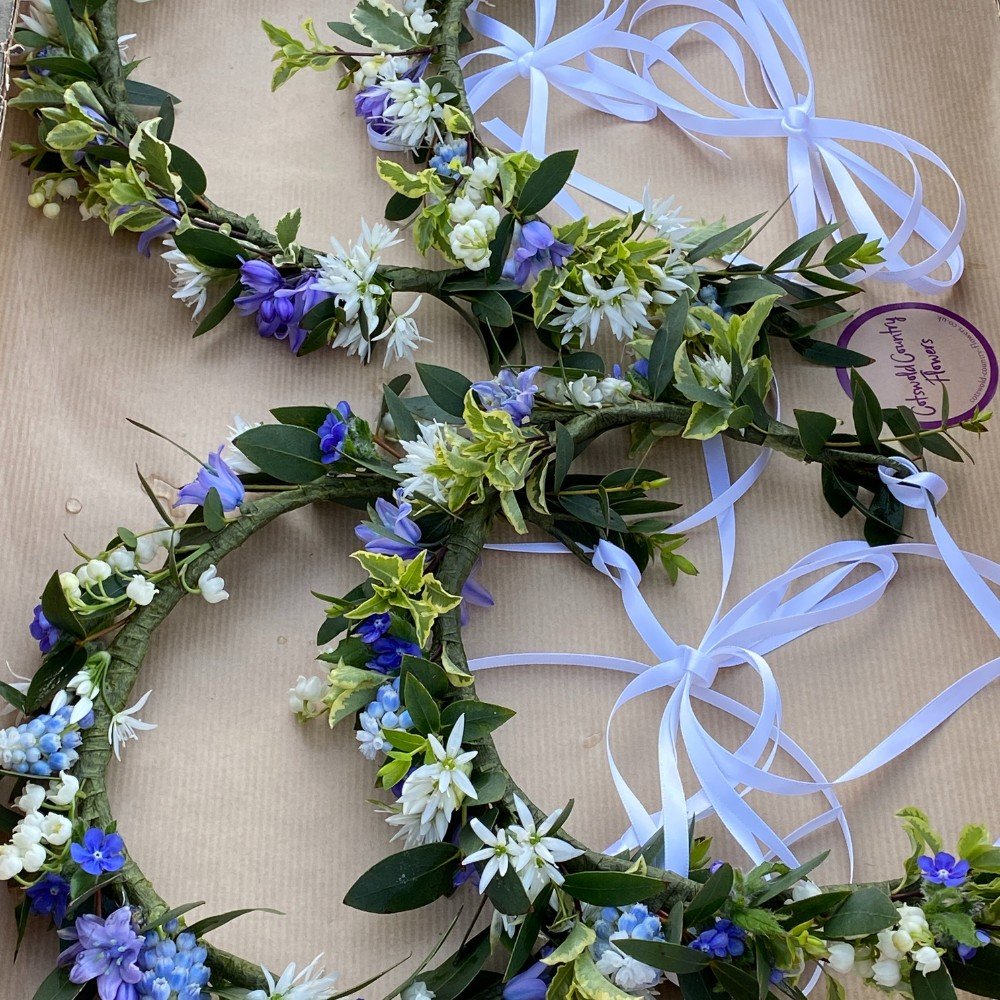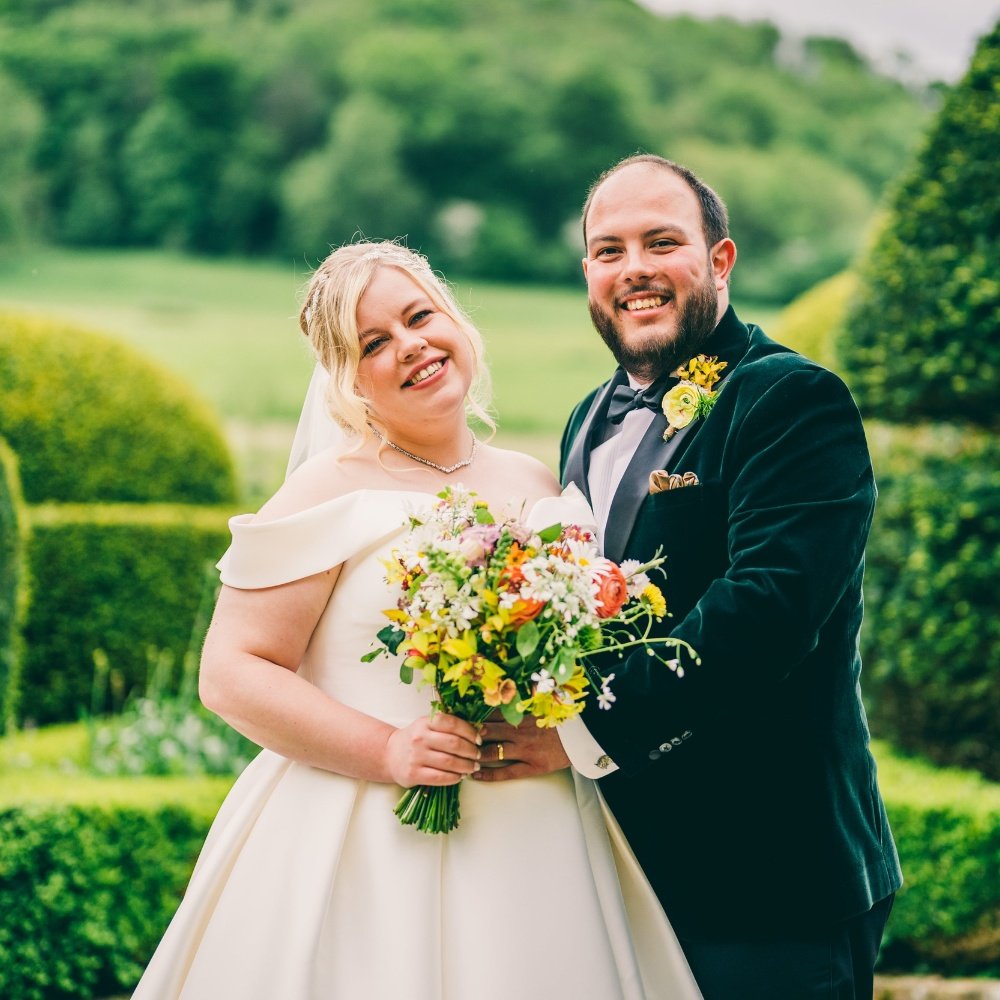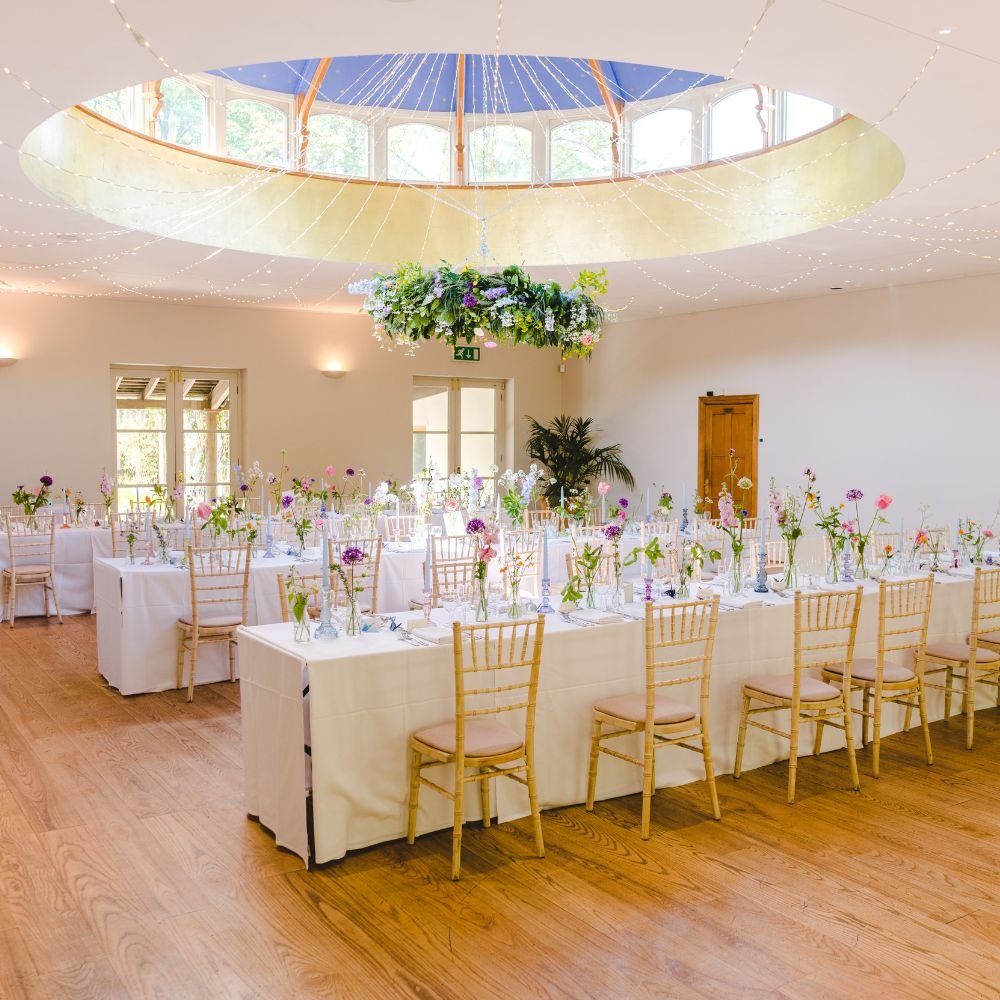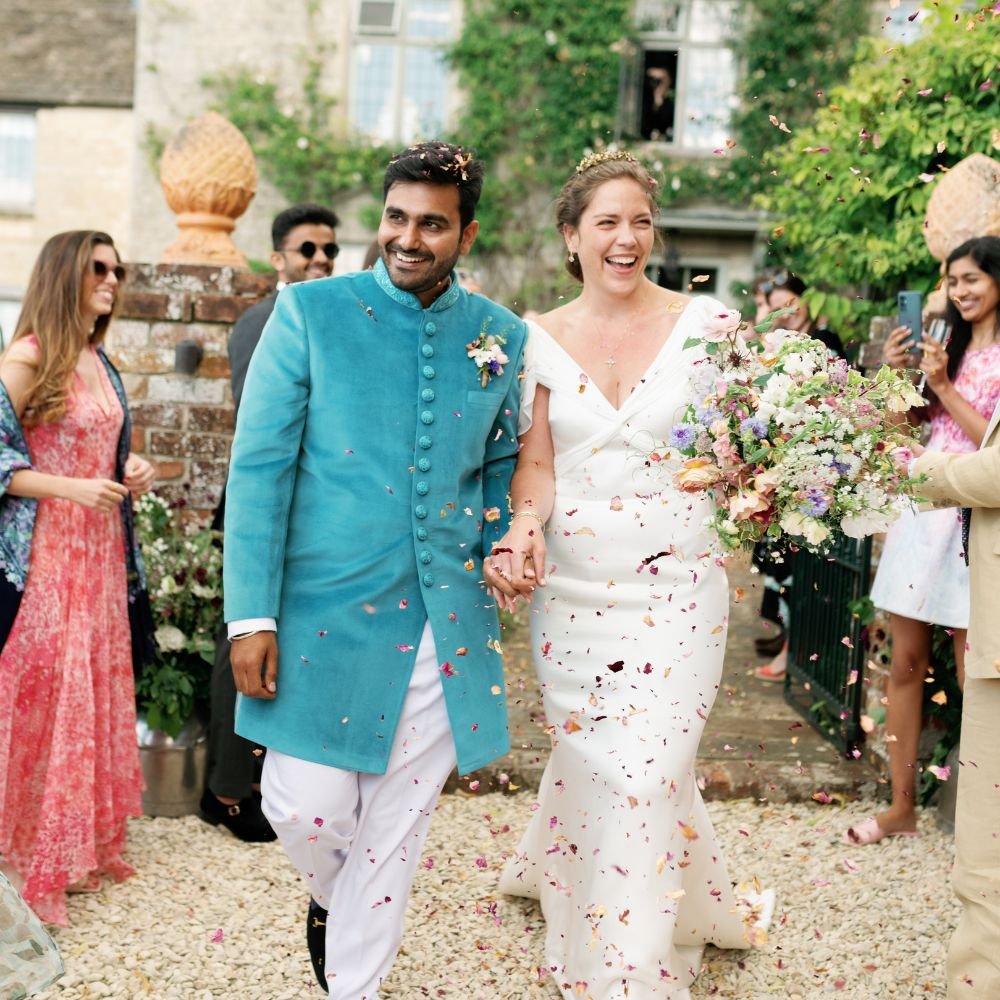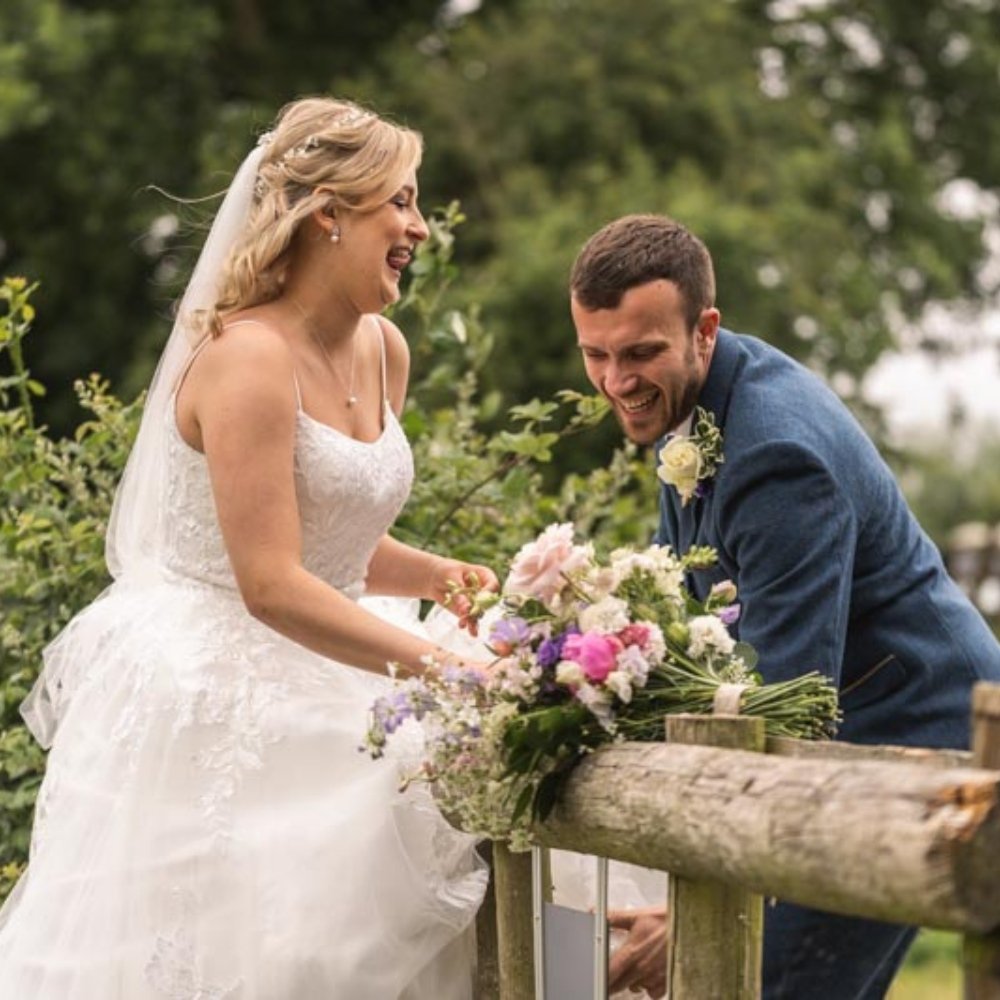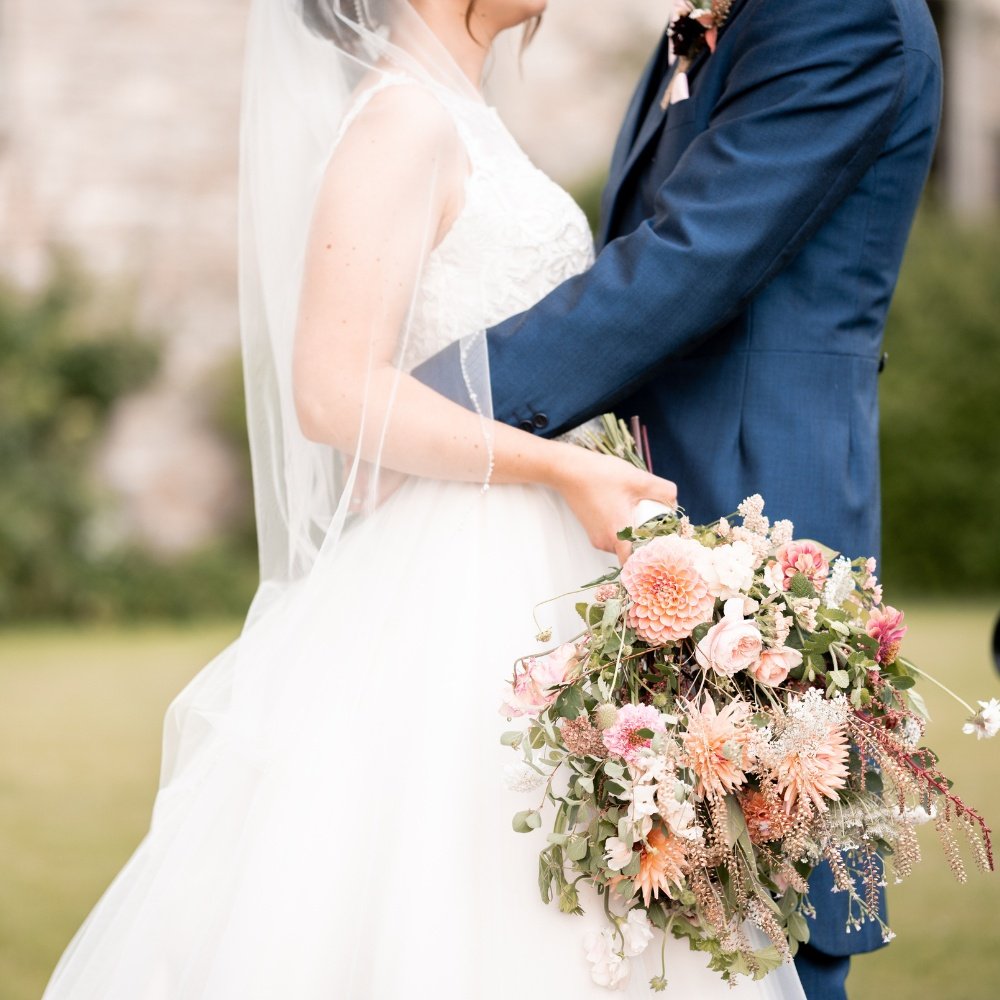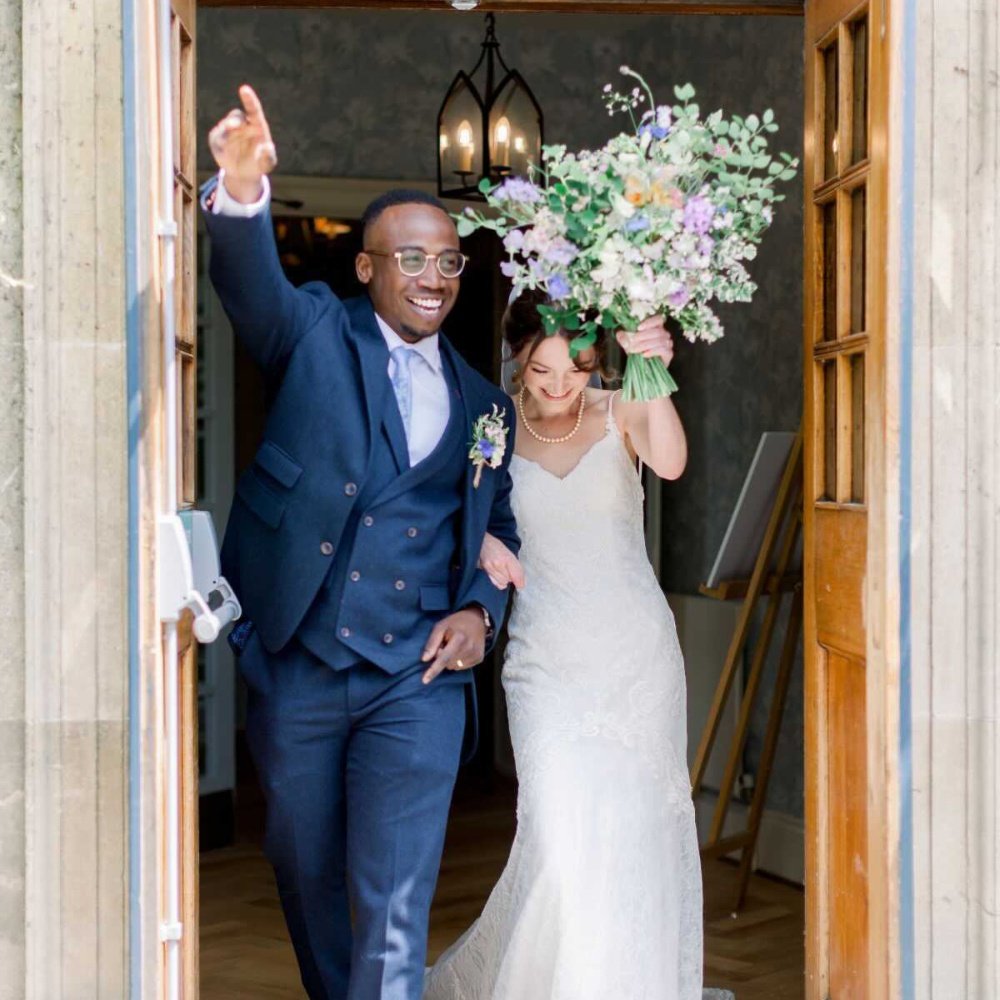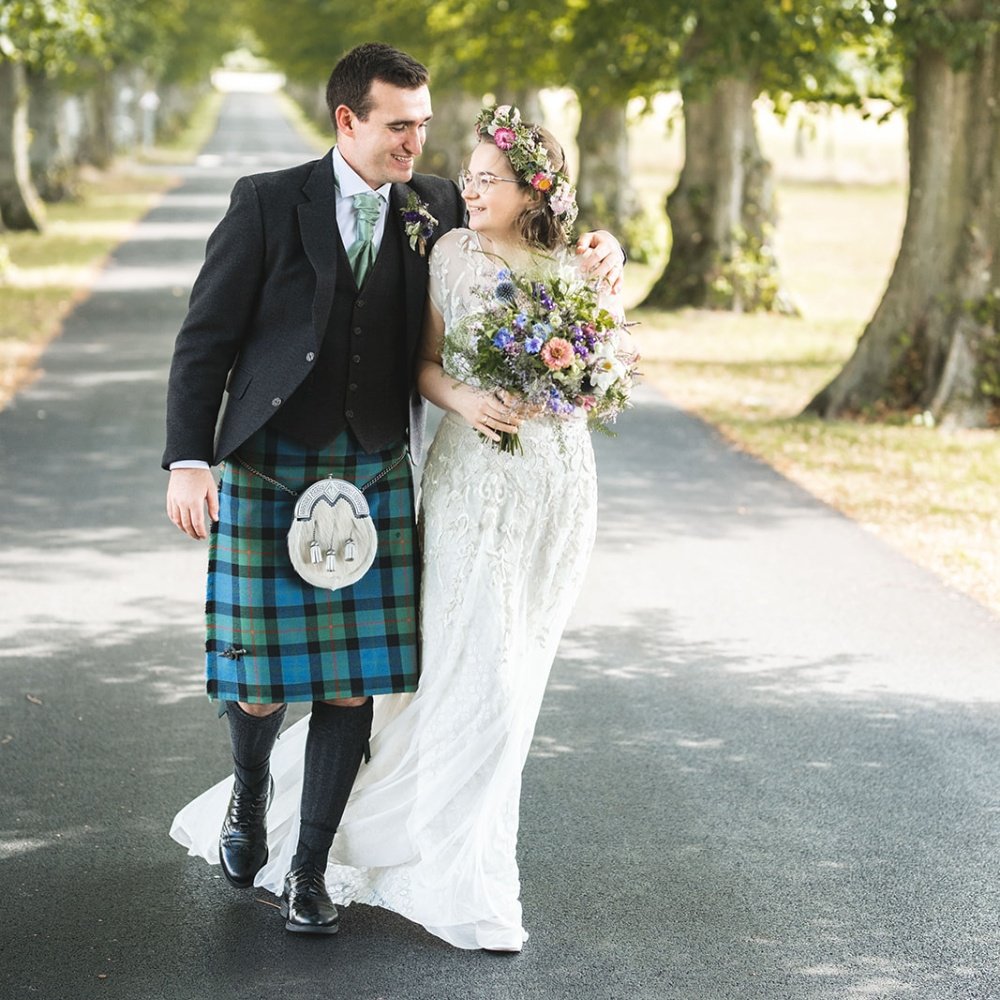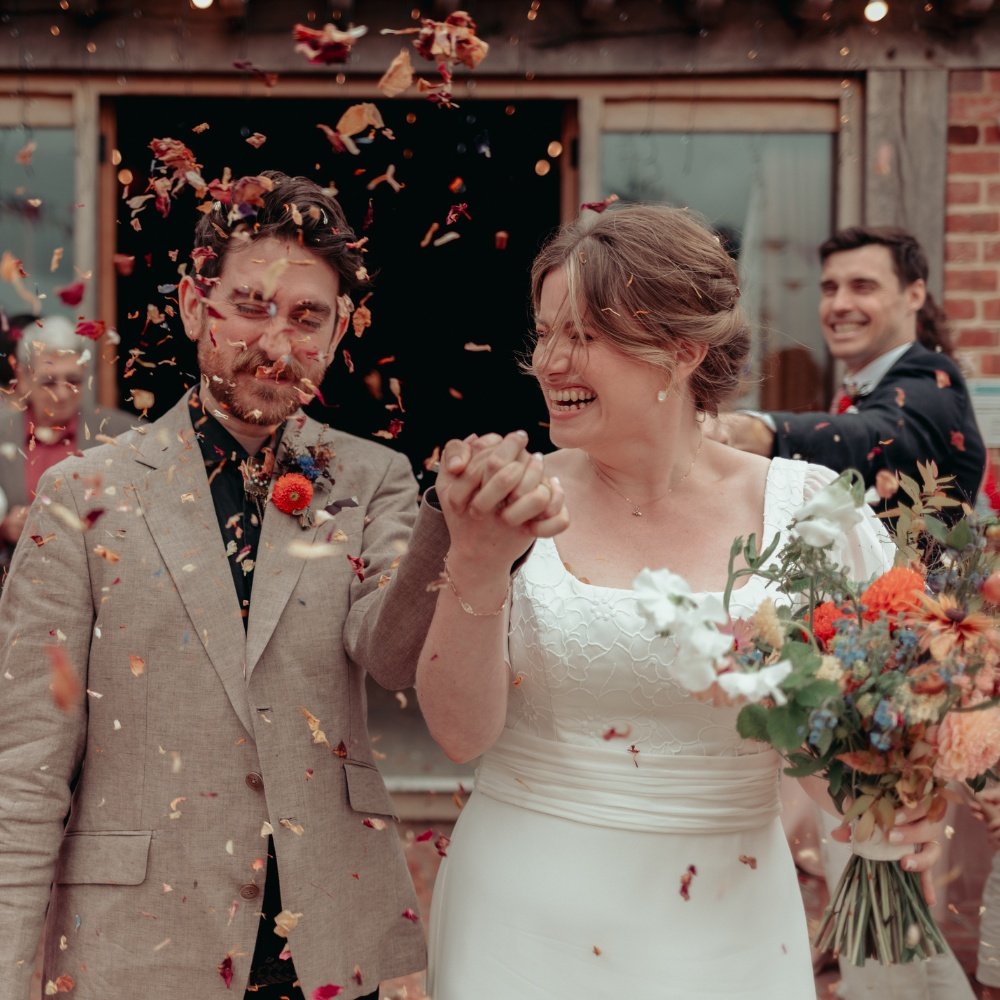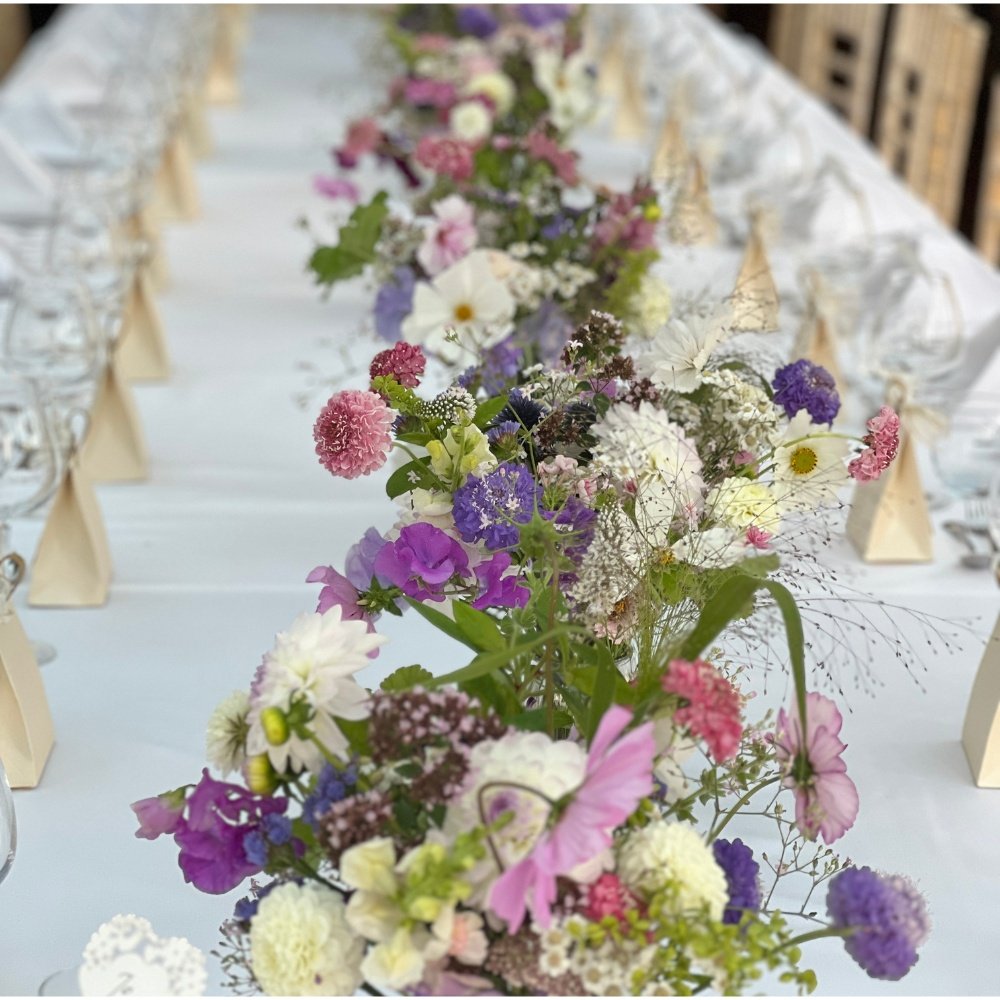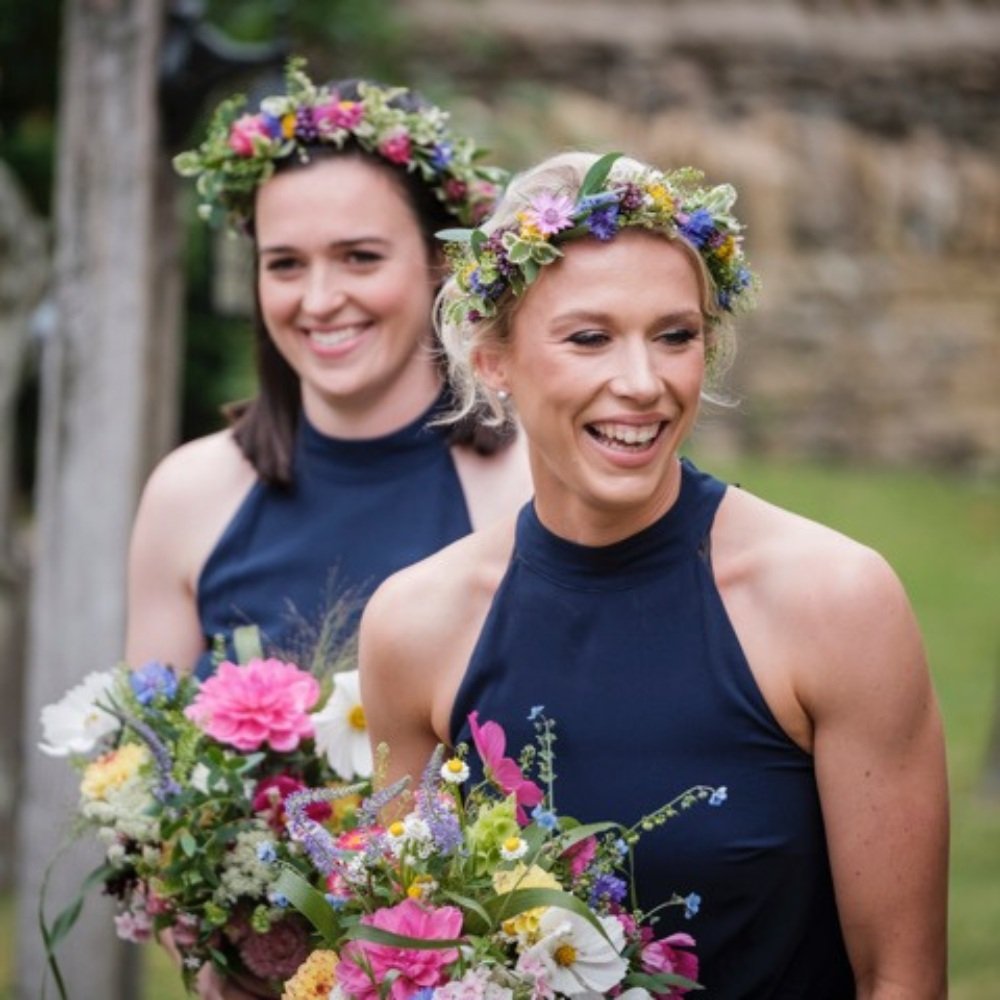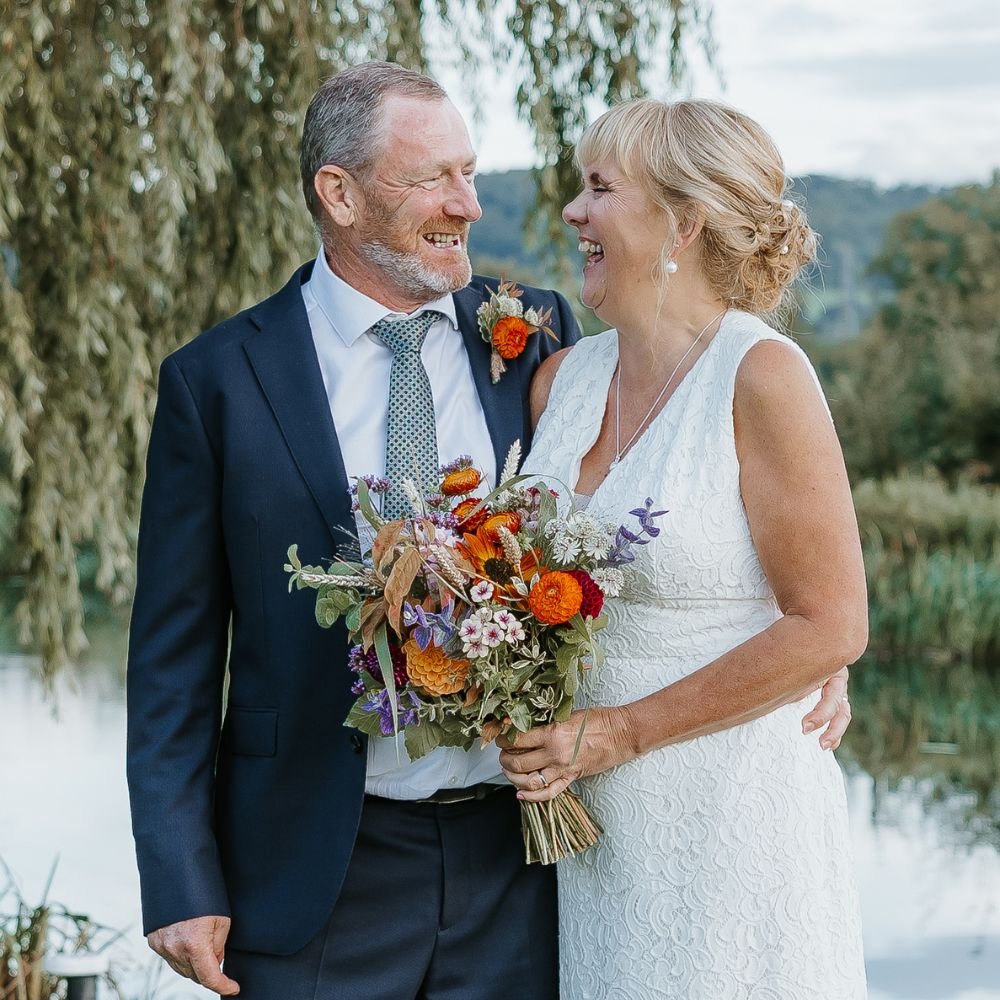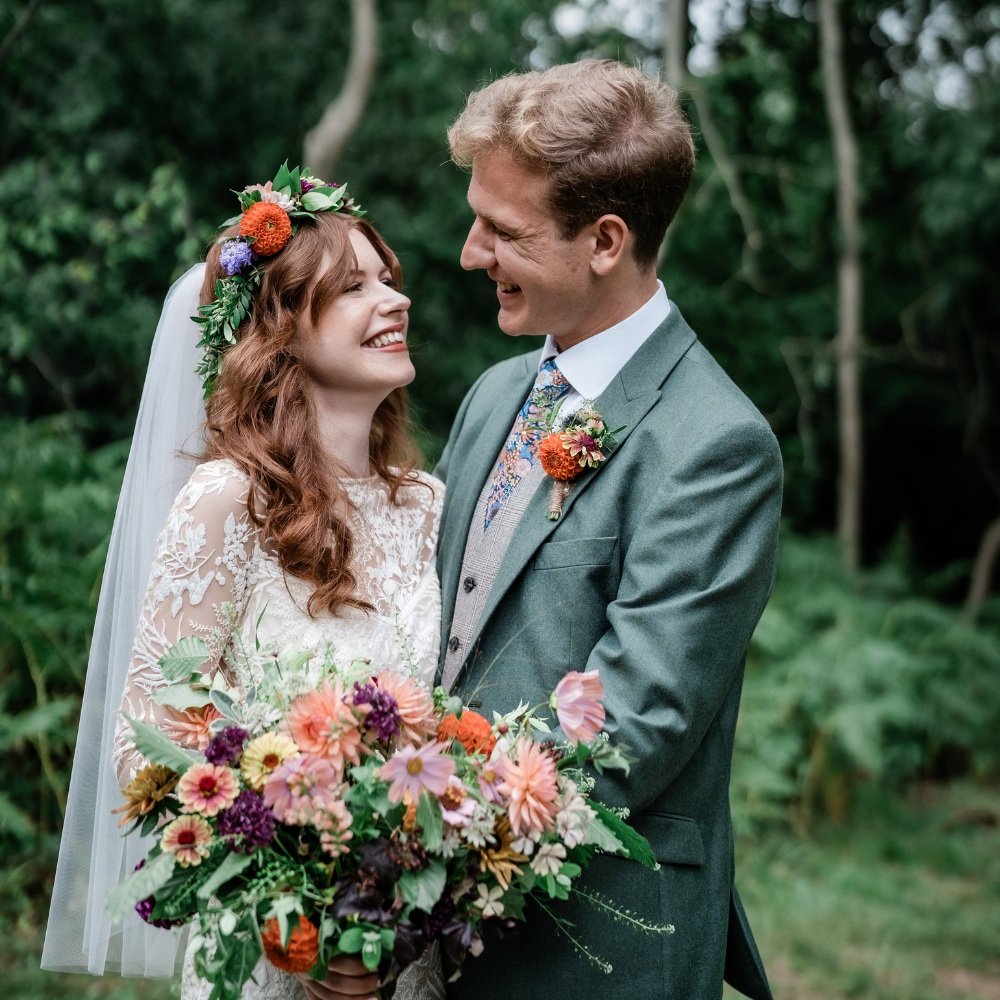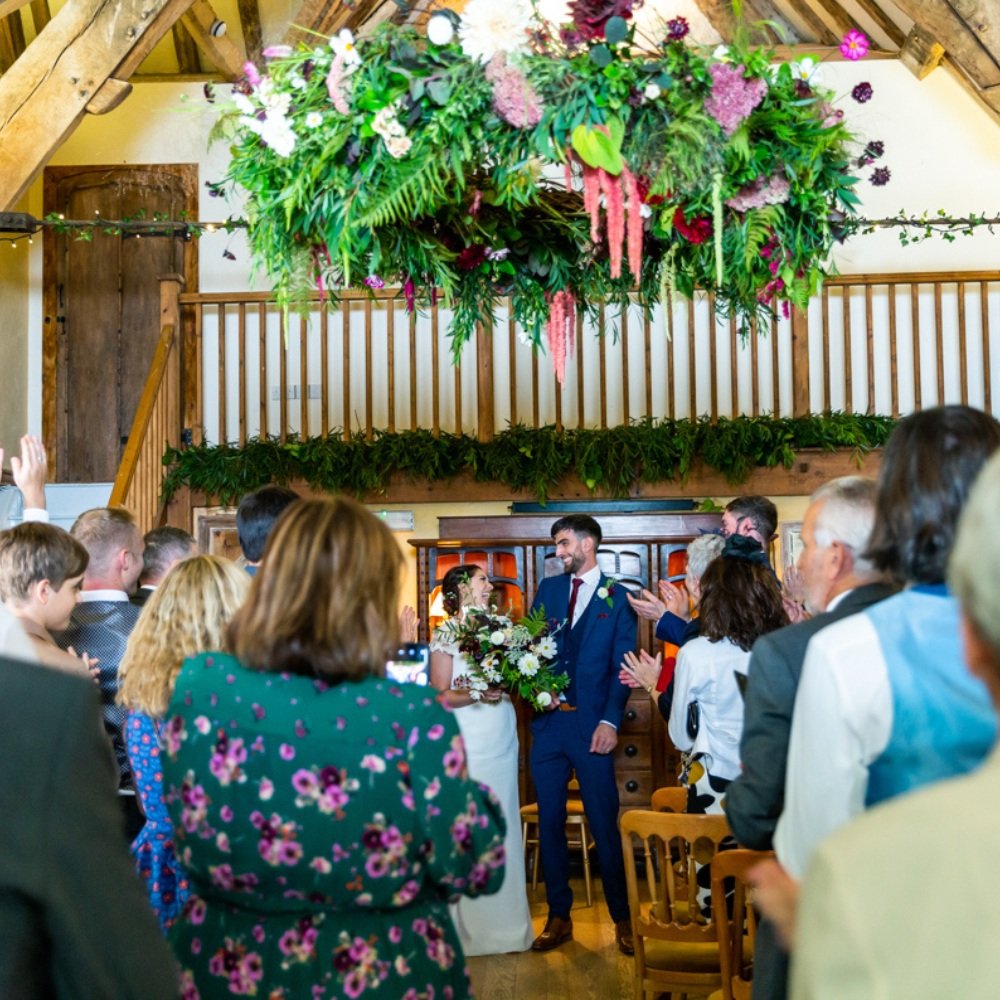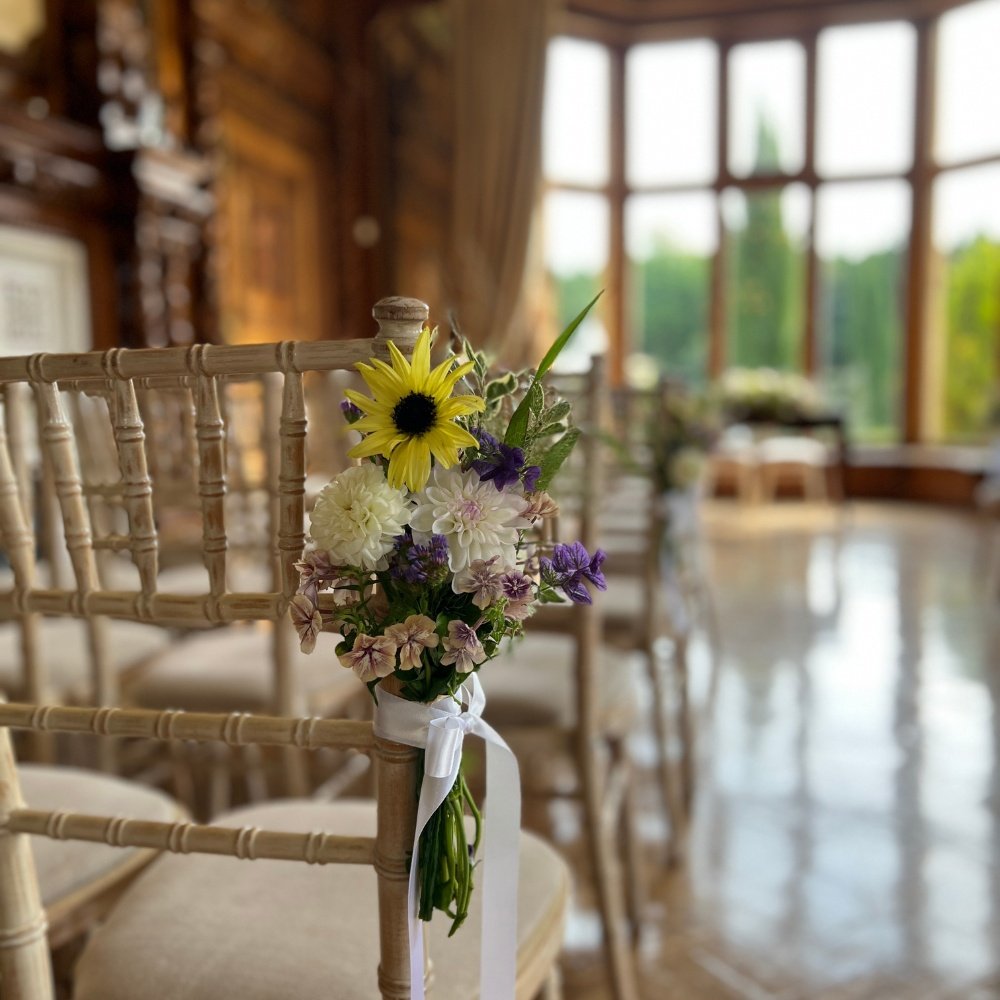Wed with the Seasons: Embrace locally grown
There is nothing quite like the charm and romance of seasonal, locally grown wedding flowers. But I’ll be honest, when I was in my twenties I loved the countryside and was already interested in gardening but I didn’t have a clue what flowers grew in each season. So I’m writing this article to my younger self. To anyone that feels likewise, let me take you by the hand and talk you through my cutting garden and flowers month by month from Spring, Summer and Autumn. You may also like to look at my monthly garden tours on YouTube.
Almost all my flower growing happens outside. Plants have to cope with whatever the British weather throws at them - no namby-pamby heated and irrigated glasshouses here! Tough love is the name of the game on my plot!
I also strive to make my gardening, propagating and floristry practices as eco-friendly and sustainable as possible. More about this in other blogs but briefly,
No artificial pesticides or herbicides are used
Wildlife is encouraged to keep on top of pests
Mainly natural fertilizers are applied when necessary
Only peat free compost is used to raise plants
No air miles and very few road miles are involved as my customers are local
I hardly do any watering which encourages plants to put down strong roots
No floral foam and as little plastic as possible is used in my floristry
Only British grown flowers and foliage are used in my floristry, if I need top up flowers I source these as locally as possible from other flower growing chums
Yes, there will be occasional wonky stems and yes, the flowers are sometimes more diminutive than their glasshouse grown, thirsty cousins but in my book, that’s fine! If it means I can hand on heart provide and use a product that is as eco friendly and sustainable as I physically can manage, that’s a huge step in the right direction. The reward is a huge variety of unique, beautiful seasonal blooms which I can freshly cut to order. What’s more, they’re blooms which I love to grow, that you’ll rarely, if ever, find in a high street florist or supermarket, they smell amazing and dance in the breeze. Sweet peas, Cosmos, Corncockle and Dahlia to name a few, all grow beautifully here on the Cotswold Edge in Gloucestershire. A typical season usually includes the flowers described below. Names are in latin for easy research on “t’internet”
Spotlight on Spring British grown Flowers in April and May
As my flowers are largely grown outside on a mere ⅓ acre, Spring is like the dawn of my growing season - it’s a bit early! Weddings and events with fewer requirements and customers with a flexible colour palette work best. Why? Let me explain…..
I’m at the mercy of the weather which is proving more and more unpredictable. Winters are getting warmer so flowering often occurs a month (sometimes more) earlier than a decade or so ago. That said, given free rein, my wedding flower clients are still rewarded with fabulous cheerful blooms and blossom in colours of generally blue, whites, cream, yellow, peaches, and pinks.
The Spring Focals
Or the lead singers; great for bridal bouquets and large displays may include:
Tulips the like of which you will not see in supermarkets,
Ranunculus which look like a mini peonies and have great vase life.
Anemone which I source from other growers
Hellebore
The Spring Fillers
I like to think of filler flowers as the backing singers supporting the lead vocal. Filler flowers are essential in many contexts (table flowers, larger displays, buttonholes and bouquets)
Allium
Apple blossom
Camassia
Convallaria majalis (lily of the valley)
Geum
Hesperis (sweet rocket)
Hyacinthoides (Bluebell)
Leucojum (looks like a giant snowdrop),
Lunaria (honesty - also great seed heads)
Muscari (grape hyacinths)
Narcissi (unusual varieties - often scented with several mini flowers per stem)
Silene (campion)
The photos above show case how some of these spring flowers were used in April and May weddings. Reference to photos (isobel murphy)
Spotlight on Summer British grown Flowers in June, July and August
Summer is frenetic! As the weather warms and daylight hours peak, the flowers just love it. The remaining biennials are still in flower and hardy annuals sown last autumn or early spring are getting into their stride. The perennial flowers save the day in the “flower gap” in late June and tender annuals such as cosmos and sunflower arrive at the party around the same time. Just as you don’t think things can get any better, the dahlias in all their glory bring a welcome wave of indulgence and gorgeousness.
Weddings in the UK are most popular in summer for obvious reasons so there is plenty of floristry, logistics and admin to manage too. Meanwhile behind the scenes, flowers sown and nurtured in the previous months mustn’t be forgotten and need to replace those that have already flowered. Spinning plates is an understatement.
It may surprise you to know the most commonly recognised focal flowers in summer (roses and peonies) aren’t given air time at Cotswold Country Flowers. Disease, weather, space and a short growing season are the main reasons why not.
On the whole, summer flowers tend to be more delicate during the early summer months with stronger feistier beauties like sunflowers and dahlia arriving later. The overlap between focal flowers that are the lead singers and filler flowers in the choir, very much depends on the stage of flowering. It is not an exact science! Timings and actual availability may overlap. I may try and sow some annual flowers twice during the season, sometimes a crop will fail and I always like to grow something new each year but with limited space is a constant juggling act. The flowers listed below are usually flowering at some point in my garden in the 3 month window I call summer.
The Summer Focals (depending on stage of crop and month)
Agrostemma (corncockle)
Antirrhinum (snapdragon)
Centaurea montana (perennial cornflower)
Cosmos
Dahlia
Digitalis (foxglove)
Helianthus (sunflower)
Helichrysum (strawflower)
Lathyrus odoratus (sweet pea)
Lavatera
Malope
The Summer Fillers
Achillea
Alchemilla mollis (ladies mantle)
Ammi majus
Astrantia
Briza maxima (greater quaking grass)
Centaurea cyanus (cornflower)
Cosmos
Daucus
Dianthus (sweet william)
Echinops
Eryngium
Gypsophila (covent garden),
Hesperis
Lepidium (pennycress)
Limonium sinuatum (statice)
Linum (common flax)
Leucanthemum vulgare (oxeye daisy)
Lysimachia clethroides (gooseneck loosestrife)
Molucella
Nigella (love in the mist)
Orach
Salvia viridis (clary sage)
Scabiosa
Tanacerum (feverfew)
Thlaspi
Can you spot any of these in the Wedding bouquet photos from June, July, and August
Spotlight on Autumn British grown Flowers in September and October
Before you know it we’re in the twilight of the growing season. It’s no less bountiful but the rate of growth slows down and flower heads tend to be smaller as light levels reduce and the nights become cooler. The natural floral colour palette becomes more jewel like: burnt oranges and dark reds complement the turning foliage and hedgerow fruits. Nevertheless I still have a contingency of pastels and colours reminiscent of the long evenings in summer. Once again the changing climate keeps us on our toes and temperatures in the late twenties in early October are no longer unusual in which case the season of flowers is slightly longer than expected.
The Autumn Focals
Dahlia (various colours)
Helianthus (sunflower)
Helichrysum,
Rudbeckia (eg sahara, cherry brandy)
Tithonia (mexican sunflower)
Zinnia (eg queen red lime)
The Autumn Fillers
Annual phlox
Antirrhinum (snapdragon)
Cosmos
Limonium (statice)
Scabiosa
Shyzostylis
Verbena bonariensis
Wow! Sometimes you just need to give yourself a big pat on the back for producing almost all of the wedding flowers shown. What’s more, they were British grown with the environment and nature in mind. The boom of Spring flowers followed by the subtleness of Summer flowers and the bold jewel colours of Autumn. In all cases the character and uniqueness of their country garden nature shines through and every wedding or event is unique because no two seasons are the same. For a unique, romantic and environmentally conscious wedding celebration think about incorporating local blooms and contact your local flower grower or a florist that favours British blooms.
For weddings in Gloucestershire or the Cotswolds I’d love to be able to help with your plans.
Photos by Captured by Katrina, The Falkenburgs, Big Eye Photography, Isobel Murphy Photography, Rob Tarren Photography, Tammie Louise Photography, Jade Ligus Photography, Helena M Photography, Lee Hawley Photography, Tom Wood Photography, Jo Bradbury photography, Antonia Grace photography, Rupert Marlow Photography
